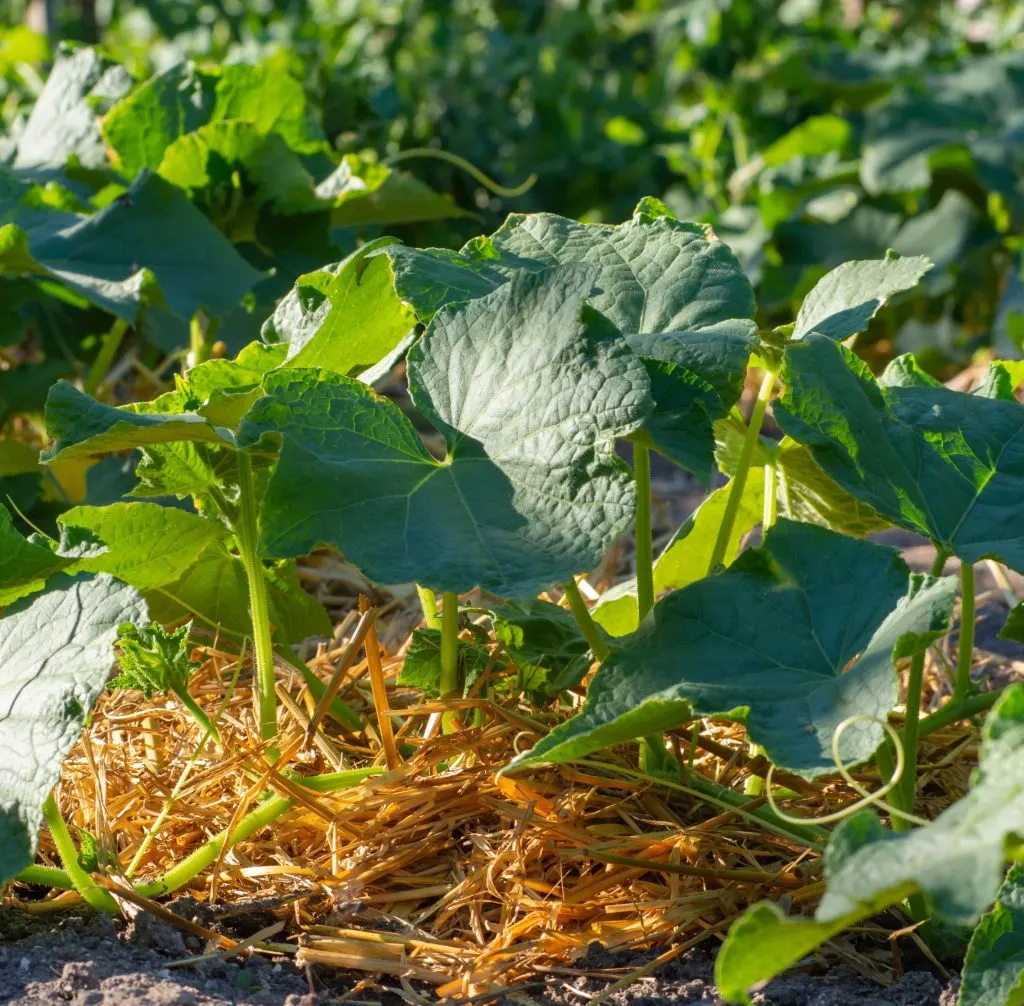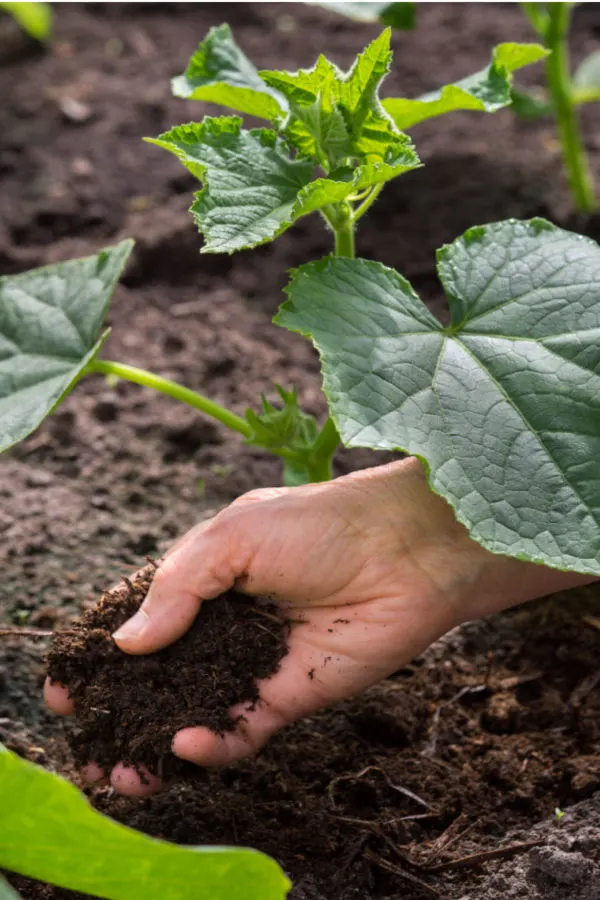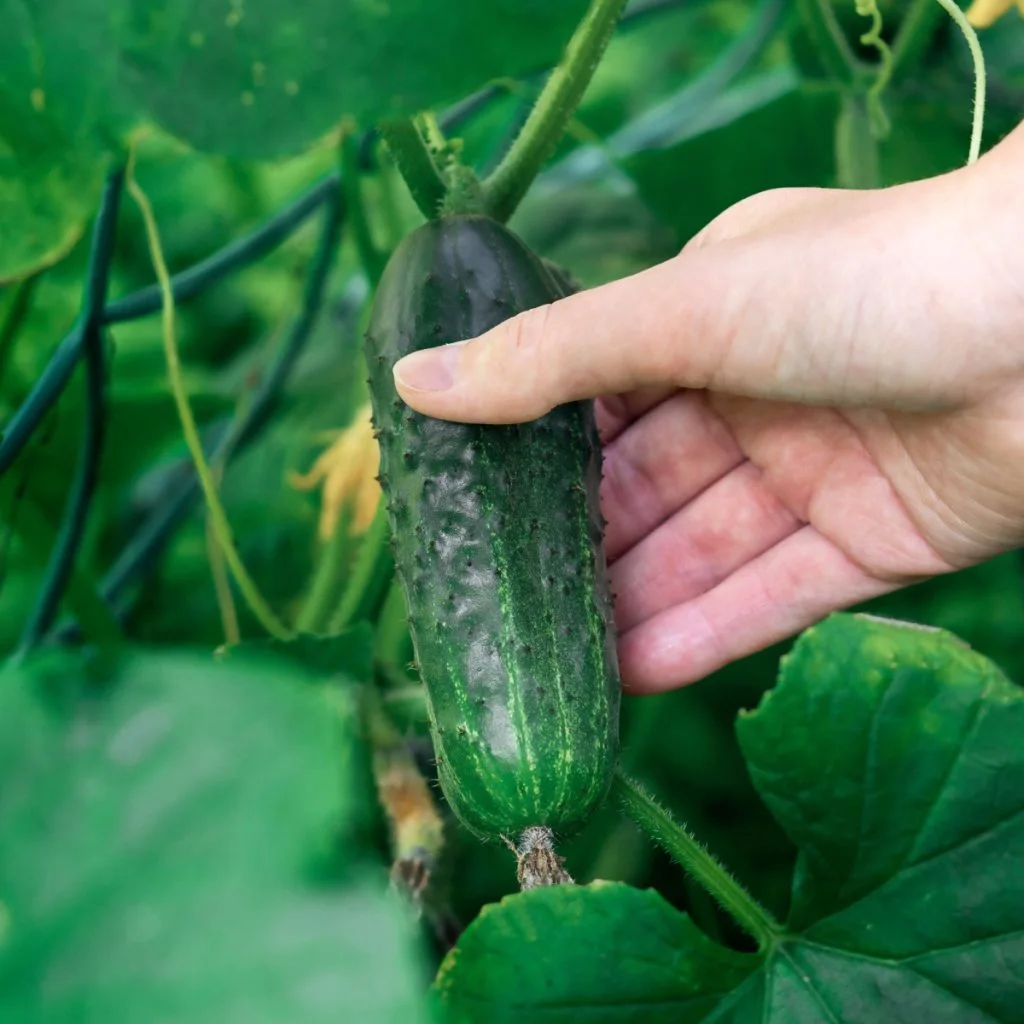One of the best ways to make sure your cucumber plants stay healthy and productive all summer is to get them off to fast start – right from the beginning!
Cucumber plants are notorious for struggling early in the growing season. Cold soil, cool weather and a lot of spring rains can often have cucumber plants lagging behind. And that can spell trouble for their long term health and productivity.
Weak plants are far more susceptible to mold, mildew, pests – and a long list of other ailments that can all but ruin a cucumber crop early on. But here’s the good news – armed with just a few simple tips and tricks early in the spring – you can all but ensure your cucumber plants will take off and soar. And – that you will have more cucumbers than you know what to do with come harvest time!

How To Get Cucumber Plants Off To A Fast Start
1. Give Your Cucumbers The Sunlight They Need
Where you grow your plants plays a huge factor in their health, vitality, and production. There are several factors that go into selecting the best location for your cucumbers, the first of which is making sure they will get enough sunlight all season long.
Cucumber plants need sunlight. Not only do they need it, they also need to have it on their foliage as early in the morning as possible. Why? Because cucumbers are one of the most susceptible plants of all when it comes to mildew.
Mildew can devastate an entire crop in short fashion. And one of the easiest and quickest ways cucumber plants can get mildew is when they are allowed to sit in moisture for extended periods of time.
Unfortunately, nothing creates more moisture on plants than early morning dew. Especially in warm and humid environments, or early in the growing season when temperatures cool off at night. When this occurs, plants can stay moist for hours on end, leading to mildew and mold issues.
Morning Sun Is Best!
By placing plants where the first rays of the morning sun can dry leaves quickly, the risk of mildew and disease is greatly diminished. Even better, early sunlight allows plants to get a jump start on absorbing energy.

Photosynthesis is a critical process plants use to grow and produce their blooms and fruit. And because light drives the entire process, the earlier plants get started creating energy, the better for the plant.
Beyond morning sunlight, always be sure to plant your cucumber crop where they will get at least six to eight hours of full sunlight each and every day. Not only will they be healthier, they will also grow bigger, better, and produce more cucumbers too!
2. Fertilizing & Watering Cucumber Plants For A Fast Start
Giving your cucumber plants the power and energy they need is vital for a fast start. And that power needs to come both from the soil they grow in – and by fertilizing them on a consistent basis.
Cucumbers thrive in loose, fertile, well-draining soil. Plain and simple, the better the soil, the healthier and more productive your plants will be. And giving them great soil to grow in begins at planting time.
There is no better way to build nutrients into your planting hole and area than by adding compost. Whether planting in containers or a traditional garden space, compost provides cucumber plants with everything they require.
Listen Below To Our Podcast On How To Grow Your Best Crop Of Cucumbers This Year!
So how much compost? For maximum results, fill the area around each planting hole with a compost/soil ratio of about at least one-third compost to two-thirds soil. A 50/50 ratio is even better if your soil is heavy and more clay-like, or nutrient poor.
Work the compost in thoroughly around the planting and growing area. This will allow the roots to spread easily. If you are growing your cucumbers in containers, always use a good quality potting soil – and then add 1 part compost to every 3 parts potting mix as you fill your container.
Fertilizing
Although mixing compost into the soil prior to planting helps supply cucumber plants with nutrients, giving plants a few additional doses of fertilizer as they develop is critical for developing abundantly productive plants. And you need to fertilize starting early on.
When fertilizing, it’s best to give your plants a lower but more frequent dose to promote strong, steady growth. Fertilize cucumber plants with a liquid organic fertilizer every 7 to 10 days mixed at half of the recommended strength. Start this after they have been up or in the ground as transplants for 10 days.
Cucumber plants respond amazingly well to liquid fertilizer. Not only do nutrients absorb through the soil, but also through the plant’s foliage as well. Select a fertilizer that has a higher ratio of phosphorus and potassium than nitrogen. This will encourage fruit production over just growth. Affiliate Link: Farmer’s Secret Fruit & Bloom Booster Fertilizer

Water Smart
In addition to fertilizing, you also need to make sure your cucumbers are getting the water they need. Although most vegetable plants thrive on one inch of water per week, cucumbers require more due to the fact that the plant and fruit are largely made up of water. How much more? About twice the amount (two inches per week) for maximum health and production.
It’s important to supply that water when rainfall is not providing it. For mature plants, one-half gallon of water applied near the plant’s roots two to three times per week will suffice. Cucumbers growing in pots or containers will require even more frequent watering.
Equally important is to not provide too much water to your plants. When cucumber plants and their roots become saturated, mildew and or yellowing of the leaves can occur. If your cucumber leaves begin to turn yellow, over-watering is usually the culprit. Over and underwatering are usually two of the biggest issues when cucumber plants fail to get off to a fast start.
3. The Importance Of Mulching
Mulching the soil underneath your cucumber plants is the final key to success! A thick layer of mulch under your cucumber plants helps to regulate soil temperature and slow evaporation of moisture from the plants and soil, all while helping to keep competing weeds from taking hold and stealing nutrients.

All of these are extremely critical for creating strong growth and production. But beyond that, mulch also helps to protect young blossoms and developing fruit from direct contact with the soil.
When laying directly in the dirt, blossoms are much more susceptible to early failure and rot. In addition, as the cucumbers develop, the mulch helps to protect their tender outer skin from damage and scarring.
Lay a thick, four to six inch layer of straw or shredded leaves under your plants. This is more than enough to snuff out competing weeds, all while giving your plants incredible protection from the sun, dehydration and more.
Keep On Picking!
And finally, to get the most cucumbers from your plants – always be sure to keep your plants picked on a regular basis. This encourages the plant to continue bloom production. When plants become too heavily overloaded with fruit, it sends a signal to the plant to stop producing new blooms. To keep your cucumber plants healthy & producing big, see our article: How To Get More Cucumbers From Your Plants – 3 Simple Tips To A Bigger Harvest!
Here’s to getting your cucumber plants off to a fast start this year! For more on cucumbers, check out our article: The Top 3 Cucumbers To Grow To Make Pickles – The Perfect “Pickle” Plants To Grow This Year!
This Is My Garden
Follow Our Facebook Page For Great Gardening Tips And Advice! This Is My Garden Facebook Page
This Is My Garden is a garden website created by gardeners, for gardeners. Jim and Mary Competti have been writing gardening, DIY and recipe articles and books and speaking for over 15 years from their 46 acre Ohio farm. They publish three articles every week, 52 weeks a year. Sign up today to follow via email, or follow along!
